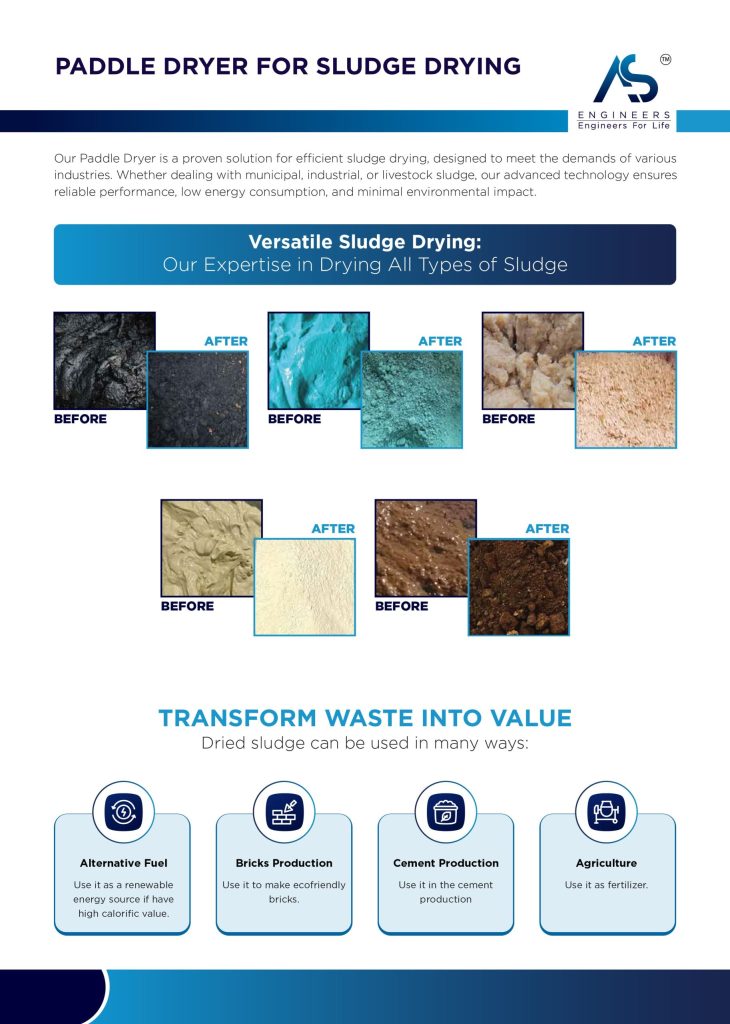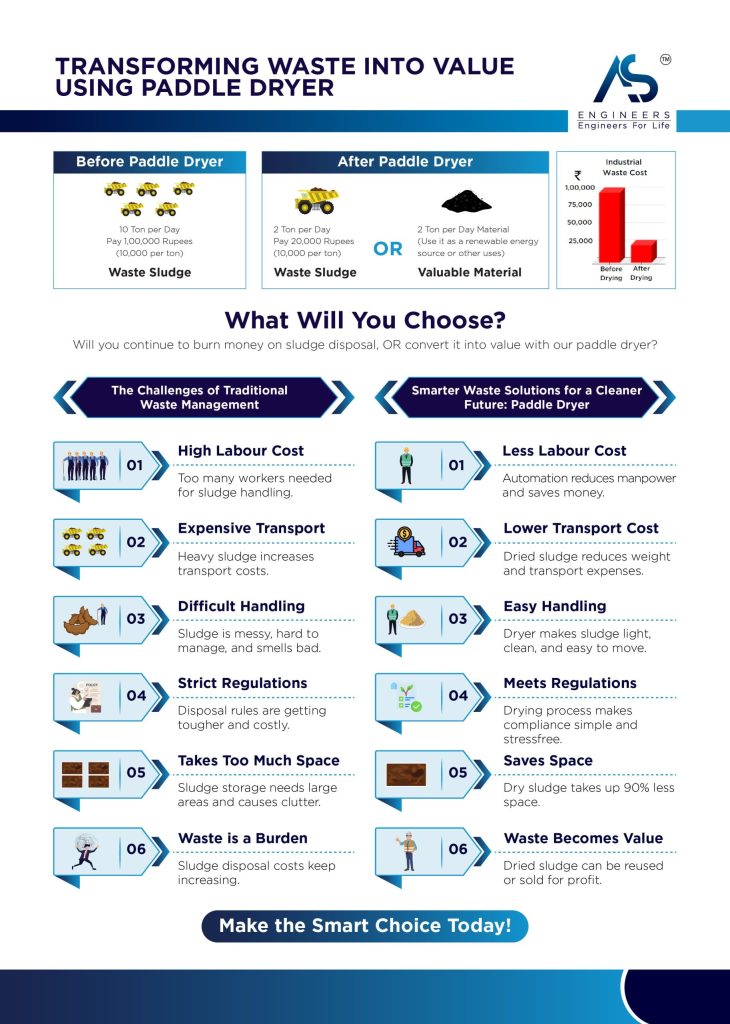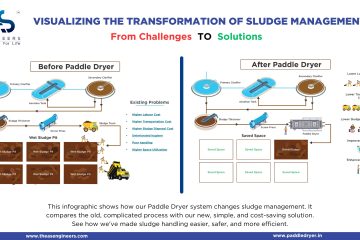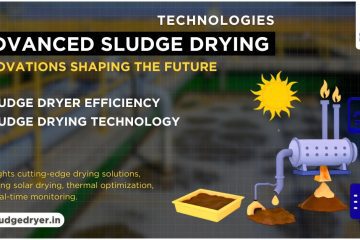Introduction: Understanding the Activated Sludge Process
Every day, wastewater treatment plants process millions of gallons of sewage using the activated sludge system, a biological treatment method that has revolutionized public sanitation for over a century. Yet despite its widespread adoption, treatment plant operators frequently encounter operational challenges that threaten system performance and compliance. Did you know that approximately 75% of municipal wastewater treatment facilities in the United States utilize some variation of the activated sludge process? This remarkable technology removes up to 98% of organic pollutants when operating optimally—but achieving that optimal performance requires vigilant monitoring and troubleshooting expertise.
Whether you’re a seasoned plant operator or new to wastewater treatment, this comprehensive guide will equip you with the knowledge to identify, diagnose, and resolve the most common activated sludge system problems. From persistent foaming issues to mysterious biomass fluctuations, we’ll explore evidence-based solutions that restore your system’s efficiency and protect both public health and environmental quality.
Table of contents
What Is an Activated Sludge System?
The activated sludge system represents the cornerstone of modern biological wastewater treatment. First developed in the early 1900s in England, this ingenious process harnesses nature’s own purification mechanisms by cultivating specific microorganisms to break down organic waste materials.
The Core Components
An activated sludge system consists of several essential components working in harmony:
- Aeration Tank: The heart of the system where biological degradation occurs as microorganisms consume organic matter in wastewater
- Aeration Equipment: Diffusers, blowers, or mechanical aerators that supply oxygen to support aerobic microbial activity
- Secondary Clarifier: A settlement tank where treated water separates from the microbial biomass (sludge)
- Return Activated Sludge (RAS) System: Pumps and piping that recycle settled microorganisms back to the aeration tank
- Waste Activated Sludge (WAS) System: Controls for removing excess biomass to maintain optimal microorganism concentrations
How the Process Works
In sewage treatment, activated sludge functions through a beautifully orchestrated biological process:
- Raw or primary-treated wastewater enters the aeration tank and mixes with a diverse microbial community
- The microorganisms—primarily bacteria, but also protozoa, rotifers, and other microscopic organisms—consume dissolved organic compounds as food
- Aeration equipment supplies oxygen, supporting rapid microbial metabolism and growth
- As microbes multiply, they form floc particles—clusters of microorganisms bound by extracellular polymeric substances
- The wastewater-microorganism mixture flows to the secondary clarifier, where gravity separates the biological floc from treated water
- Clear, treated effluent exits the system while the settled microorganisms (activated sludge) are returned to the aeration tank to maintain the biological process
This elegant system achieves what was once thought impossible: the large-scale purification of human waste through natural biological processes.
Common Activated Sludge System Problems and Solutions
Even the best-designed activated sludge systems encounter operational challenges. Let’s explore the most common issues and their proven solutions.
1. Sludge Bulking
Sludge bulking ranks among the most prevalent and frustrating activated sludge problems, affecting an estimated 60% of treatment plants periodically.
Symptoms of Bulking Sludge:
- Poor settleability in the secondary clarifier
- High sludge volume index (SVI) values (typically >150 mL/g)
- Cloudy effluent with visible solids carryover
- Low return activated sludge concentrations
- Visible filamentous growth under microscopic examination
Primary Causes:
- Filamentous Bacteria Overgrowth: Certain bacterial species like Nocardia, Microthrix parvicella, or Type 021N produce long filaments that prevent proper floc compaction
- Low Dissolved Oxygen (DO) Levels: Insufficient aeration creates conditions favoring filamentous organisms
- Nutrient Imbalances: Deficiencies in nitrogen or phosphorus limit proper floc formation
- Unfavorable Food-to-Microorganism (F/M) Ratio: Either too high or too low F/M ratios can promote bulking
- pH Imbalances: Operation outside the optimal pH range (typically 6.5-8.0)
Effective Solutions:
- Microscopic Identification: First, identify the specific filamentous organisms causing the bulking through phase-contrast microscopy to determine the appropriate intervention
- Selective Chlorination: Apply controlled doses of chlorine (2-5 mg/L) to the return activated sludge to selectively target filamentous organisms while preserving beneficial bacteria
- Oxygen Management: Increase dissolved oxygen concentrations throughout the aeration basin to at least 2 mg/L, ensuring no oxygen-deficient zones exist
- Nutrient Supplementation: Add nitrogen and phosphorus to maintain the recommended BOD:N ratio of 100:5:1
- Selector Implementation: Install a selector zone at the head of the aeration basin that creates conditions favoring floc-forming bacteria over filamentous types
- Adjust the F/M Ratio: Modify waste activated sludge rates to maintain appropriate Food-to-Microorganism ratios (typically 0.2-0.5 for conventional systems)
One municipal plant in Colorado reduced SVI values from 250 to 120 within two weeks by implementing a combination of increased DO levels and selective chlorination after identifying Type 021N as their problematic filament.
2. Foam and Scum Formation
Persistent foaming represents another common activated sludge system challenge that plagues treatment plants worldwide.
Symptoms of Foaming Issues:
- Thick, stable foam on aeration basin surfaces
- Foam with distinct characteristics (white, chocolate-brown, or tan coloration)
- Foam accumulation in clarifiers and other downstream processes
- Potential for foam to exit the system, creating permit violations
- Interference with instrumentation and level sensors
Primary Causes:
- Nocardia or Microthrix Growth: These hydrophobic filamentous bacteria create stable, persistent foams
- Young Sludge Conditions: Low sludge age systems with excessive food availability
- Surfactants: Industrial discharges containing detergents or other surface-active compounds
- Nutrient Deficiencies: Particularly nitrogen limitations
- Protein-Rich Wastes: Certain industries (like dairy or meat processing) contribute proteins that create stable foams
Effective Solutions:
- Foam Type Identification: Distinguish between filamentous foams (typically brown) and non-filamentous foams (usually white) through microscopic examination
- Sludge Age Management: For Nocardia-related foaming, increase the sludge age (longer solids retention time) to above 12 days
- Chemical Defoamers: Apply silicone-based or water-based defoamers at controlled dosages, but only as a temporary measure
- Water Sprays: Install spray systems that physically break down foam accumulations
- Foam Traps: Implement physical barriers that contain foam within the treatment system
- Selective Wasting: Remove foam-causing organisms by skimming and wasting foam layers directly
- Source Control: Work with industrial contributors to reduce surfactant and protein loads entering the system
A treatment plant in Texas eliminated persistent Nocardia foaming by increasing their solids retention time from 8 to 14 days while simultaneously implementing a targeted chlorination program of the return activated sludge line.
3. Poor Floc Formation
The quality of activated sludge floc directly impacts treatment efficiency and effluent clarity.
Symptoms of Poor Flocculation:
- Small, weak floc particles that resist settling
- Turbid effluent with elevated suspended solids
- “Pin floc” or tiny particles visible in clarifier effluent
- Poor compaction in the secondary clarifier
- Increased polymer demand in downstream processes
Primary Causes:
- Toxic Substances: Industrial chemicals that disrupt biological activity
- Rapid Changes in Conditions: Sudden pH, temperature, or dissolved oxygen fluctuations
- Insufficient Mixing: Inadequate contact between microorganisms and wastewater
- Extreme F/M Ratios: Either starvation conditions or excessive loading
- Shearing Forces: Excessive turbulence from pumps or aeration equipment
Effective Solutions:
- Industrial Pretreatment Enforcement: Identify and address sources of toxic discharges
- Process Stability: Implement operational controls that minimize rapid changes in operating conditions
- Mixing Optimization: Ensure proper mixing intensity throughout the aeration basin
- Return Rate Adjustments: Modify return activated sludge rates to maintain optimal mixed liquor suspended solids concentrations
- Bioaugmentation: Introduce specialized bacterial products to enhance floc formation during recovery periods
- Coagulant Addition: Consider low dosages of aluminum or iron-based coagulants to improve flocculation temporarily while addressing root causes
4. Rising Sludge
Rising sludge occurs when seemingly well-settled sludge suddenly floats to the clarifier surface, causing significant effluent quality problems.
Symptoms of Rising Sludge:
- Sludge initially settles well but then rises to the surface after 1-2 hours
- Gas bubbles visible within or beneath the sludge blanket
- Clumps of sludge breaking through the clarifier surface
- Increased effluent suspended solids
- System demonstrates normal settling in laboratory tests until gas formation begins
Primary Causes:
- Denitrification: Nitrate conversion to nitrogen gas in the oxygen-depleted environment of the clarifier
- Excessive Sludge Blanket Depth: Deep sludge blankets promote anaerobic conditions
- Extended Sludge Retention in Clarifiers: Slow return rates allow denitrification to progress
- Warm Temperatures: Accelerated biological reactions in summer months
- High Nitrate Concentrations: Insufficient denitrification in the main process
Effective Solutions:
- Sludge Blanket Management: Maintain clarifier sludge blanket depths below 2 feet
- Increased Return Rates: Accelerate the return of settled sludge to prevent extended retention in the clarifier
- Intentional Denitrification Zones: Create anoxic zones within the aeration basin to remove nitrates before secondary clarification
- Step-Feed Configuration: Implement step-feed operation to distribute oxygen demand and promote denitrification in the main process
- Chemical Addition: In emergency situations, chlorination of the return activated sludge can temporarily suppress biological activity and gas formation
One innovative plant in Wisconsin eliminated their chronic summer rising sludge issues by converting their first 30% of aeration basin volume to anoxic conditions, reducing effluent nitrate levels from 12 mg/L to 3 mg/L and completely resolving clarifier denitrification problems.
5. Low Dissolved Oxygen Conditions
Insufficient dissolved oxygen undermines the fundamental aerobic processes at the heart of the activated sludge system.
Symptoms of Low DO Problems:
- Dissolved oxygen readings consistently below 1.0 mg/L
- Septic or hydrogen sulfide odors from the aeration basin
- Poor BOD removal efficiency
- Development of filamentous bulking conditions
- Sluggish oxygen uptake rate (OUR) measurements
Primary Causes:
- Insufficient Aeration Capacity: Undersized or failing blowers, diffusers, or aerators
- Excessive Organic Loading: Unusually high BOD or COD concentrations overwhelming oxygen supply
- Diffuser Fouling: Mineral scaling or biological growth reducing oxygen transfer efficiency
- Unexpected Population Growth: Community expansion exceeding design capacity
- Industrial Slug Loads: Periodic high-strength waste discharge events
Effective Solutions:
- Aeration System Assessment: Evaluate diffuser condition, blower performance, and oxygen transfer efficiency
- Diffuser Cleaning or Replacement: Implement regular maintenance programs for diffuser systems
- Supplemental Aeration: Install temporary aeration equipment during peak load periods
- Mixed Liquor Concentration Reduction: Lower MLSS concentrations to reduce oxygen demand
- Strategic Load Management: Work with industrial contributors to schedule high-strength discharges during low-flow periods
- Pure Oxygen Supplementation: In extreme cases, consider pure oxygen injection systems to boost dissolved oxygen levels
6. Sludge Age Management Problems
Controlling the age of microorganisms in an activated sludge system directly impacts treatment performance and efficiency.
Symptoms of Sludge Age Issues:
- Young Sludge Problems: Dispersed growth, poor settling, and incomplete treatment
- Old Sludge Problems: Excessive endogenous respiration, nutrient deficiencies, and diminished settling
- Erratic effluent quality despite consistent influent conditions
- Difficulty maintaining target mixed liquor suspended solids concentrations
- Microscopic examination reveals either simple, fast-growing organisms (young sludge) or highly diverse populations with excessive higher life forms (old sludge)
Primary Causes:
- Inadequate Wasting Programs: Inconsistent or improperly calculated waste activated sludge removal
- Flow and Load Variations: Seasonal or unexpected changes in influent characteristics
- Temperature Fluctuations: Seasonal changes affecting microbial growth rates
- Return Sludge Limitations: Inadequate RAS capacity constraining process control
- Improper Measurement Methods: Inaccurate laboratory testing of mixed liquor concentrations
Effective Solutions:
- Implement Solids Inventory Control: Calculate total system solids and establish target inventory values
- Develop Temperature-Specific Wasting Protocols: Adjust solids retention time based on seasonal temperature changes
- Automated Wasting Systems: Install flow-paced WAS pumping systems linked to influent flow meters
- Regular Microscopic Examination: Monitor microbial community structure to identify sludge age issues early
- F/M Ratio Monitoring: Track the relationship between incoming food (BOD) and microbial mass to supplement sludge age calculations
- Mass Balance Calculations: Perform regular mass balance calculations to verify solids handling effectiveness
Advanced Troubleshooting Techniques for Activated Sludge Systems
For persistent or complex activated sludge issues, operators must employ sophisticated diagnostic and corrective approaches.
Process Control Testing
Essential Testing Parameters:
- Settleability Testing: Conduct 30-minute and 60-minute settled volume tests to track settling performance trends
- Sludge Volume Index (SVI): Calculate this critical parameter daily and track multi-day trends
- Zone Settling Velocity (ZSV): Determine the initial settling rate of the activated sludge to assess clarifier performance
- Oxygen Uptake Rate (OUR): Measure the biological activity and health of the microbial community
- Specific Oxygen Uptake Rate (SOUR): Calculate the oxygen consumption per unit of biomass to assess microbial activity
- Microscopic Examination: Regularly observe floc structure, filamentous organism presence, and higher life forms
Process Control Strategies:
- State Point Analysis: Use this graphical technique to evaluate clarifier performance and capacity
- Statistical Process Control: Implement control charts to identify process variations requiring attention
- Mass Balance Calculations: Track solids throughout the system to identify accumulation or loss points
- Food-to-Microorganism Ratio Control: Maintain appropriate F/M ratios for your specific process type
- Solids Retention Time Management: Calculate and control SRT based on temperature and treatment objectives
Microbiology Assessment and Management
The microscopic examination of activated sludge provides invaluable insights into system health and performance issues.
Microscopic Indicators:
- Floc Structure Assessment: Evaluate floc size, density, strength, and morphology
- Filamentous Organism Identification: Use identification keys to determine specific filamentous bacteria species
- Higher Life Form Analysis: Monitor the presence and diversity of protozoa and metazoa as indicators of sludge age and stability
- Gram Staining: Differentiate between gram-positive and gram-negative filamentous organisms to guide corrective actions
- Neisser Staining: Identify polyphosphate-accumulating organisms important for biological phosphorus removal
Biologically-Based Interventions:
- Bioaugmentation: Introduce specialized bacterial cultures to address specific deficiencies or outcompete problematic organisms
- Biostimulation: Add micronutrients or growth factors to enhance desirable biological activity
- Selector Technology: Implement anaerobic, anoxic, or aerobic selector zones to shape microbial community structure
- Contact Stabilization: Modify process configuration to create high food gradients that discourage filamentous growth
- Step-Feed Operation: Distribute influent flow at multiple points to create favorable F/M gradients
Operational Optimization Strategies
Beyond specific problem-solving approaches, overall operational excellence plays a crucial role in activated sludge system performance.
Key Operational Strategies:
- Diurnal Flow Management: Adjust return rates, aeration intensity, and wasting programs to accommodate daily flow patterns
- Seasonal Operational Adjustments: Modify target parameters based on seasonal temperature changes
- Energy Optimization: Implement dissolved oxygen control systems to minimize energy consumption while maintaining treatment effectiveness
- Chemical Addition Programs: Develop strategic chemical dosing programs for phosphorus removal, filament control, or performance enhancement
- Instrumentation and Control Systems: Utilize online monitoring and automated control to stabilize process conditions
One innovative treatment plant in Washington state reduced energy consumption by 28% while simultaneously improving effluent quality by implementing advanced instrumentation with automated dissolved oxygen control in their activated sludge system.


Preventing Activated Sludge System Problems
While troubleshooting skills remain essential, prevention offers the most cost-effective approach to activated sludge management.
Preventive Maintenance Programs
Critical Maintenance Activities:
- Diffuser Cleaning/Replacement: Establish regular schedules based on manufacturer recommendations and system-specific fouling rates
- Blower Maintenance: Implement comprehensive maintenance protocols including vibration analysis, filter replacement, and performance testing
- Clarifier Mechanism Care: Regularly inspect and maintain drive units, weirs, baffles, and sludge collection systems
- Pump Performance Testing: Conduct regular efficiency testing of RAS and WAS pumping systems
- Instrumentation Calibration: Maintain accuracy of DO probes, flow meters, level sensors, and other critical instruments
Operator Training and Knowledge Development
Essential Knowledge Areas:
- Microbiology Fundamentals: Ensure operators understand the biological principles underlying the activated sludge process
- Process Control Calculations: Develop proficiency in F/M ratio, sludge age, and mass balance calculations
- Microscopic Examination Skills: Train operators to perform basic microscopic assessments
- Troubleshooting Methodologies: Establish systematic approaches to problem identification and resolution
- Data Analysis Techniques: Develop skills in trend analysis and early problem detection
Process Monitoring and Data Management
Effective Monitoring Strategies:
- Data Visualization Tools: Implement graphical systems that highlight trends and relationships between key parameters
- Statistical Process Control: Establish control limits for critical parameters and monitor for excursions
- Early Warning Systems: Develop trigger points that prompt investigation before problems become severe
- Comprehensive Testing Programs: Balance online instrumentation with laboratory testing for verification and additional parameters
- Historical Data Analysis: Regularly review historical performance to identify seasonal patterns and anticipate challenges
The Future of Activated Sludge Systems
The activated sludge process continues to evolve with technological advances and increasing treatment demands.
Emerging Technologies
Innovative Approaches:
- Granular Activated Sludge: New process variations that develop dense, fast-settling granules instead of conventional floc
- Membrane Bioreactors (MBRs): Integration of membrane filtration with biological treatment for superior solids separation
- Advanced Process Control: Machine learning and artificial intelligence applications for optimizing complex biological systems
- Resource Recovery: Processes that extract valuable resources like phosphorus or bioplastics from activated sludge
- Low-Energy Configurations: Novel process arrangements that minimize energy requirements while maintaining treatment effectiveness
Regulatory Trends and Compliance Challenges
Evolving Requirements:
- Nutrient Removal Standards: Increasingly stringent nitrogen and phosphorus limits driving process modifications
- Contaminants of Emerging Concern: Growing focus on pharmaceuticals, microplastics, and other trace contaminants
- Energy Efficiency Mandates: Requirements to reduce carbon footprint and energy consumption
- Biosolids Quality Standards: More rigorous requirements for sludge disposal and beneficial reuse
- Real-Time Monitoring Requirements: Regulatory trends toward continuous monitoring and reporting
Conclusion: Mastering Activated Sludge System Management
The activated sludge system remains the cornerstone of modern wastewater treatment, offering unparalleled organic removal efficiency when properly operated and maintained. By understanding the fundamental biological principles, implementing proactive monitoring programs, and developing systematic troubleshooting approaches, treatment plant operators can overcome the common challenges discussed in this guide.
Remember that successful activated sludge management requires balancing multiple competing factors—dissolved oxygen levels, F/M ratios, sludge age, return rates, and waste rates—while accommodating ever-changing influent conditions. The art and science of activated sludge operation demand both technical knowledge and intuitive understanding developed through experience.
Whether you’re addressing persistent foaming issues, battling filamentous bulking, or optimizing your system for enhanced nutrient removal, the solutions presented in this guide provide a foundation for effective activated sludge system troubleshooting. By combining these approaches with site-specific observations and continuous learning, you can achieve the consistent, high-quality treatment performance that protects public health and environmental quality.




